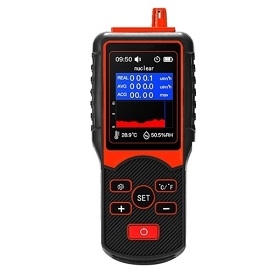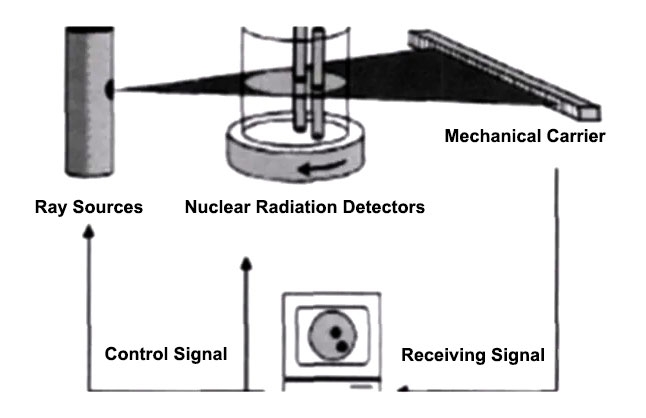A nuclear radiation detector is an instrument used to detect and measure the levels of nuclear radiation present in the environment, using different detection techniques to capture and quantify the presence and activity of radioactive particles. The working principle of a nuclear radiation detector varies depending on its type, but they share the common goal of providing accurate radiation data to ensure human health and environmental safety. sisco shop will detail how a radiation detector works.
Working Principle
Nuclear radiation detector mainly through its core components of a nuclear radiation detector to measure radiation rays and their properties, the use of rays and material interaction produced by a variety of effects, the need to detect a variety of physical, chemical, and other variables of the information into measurable electrical signals, and then transmitted to the chip to calculate the results.
When a particle passes through a substance, the substance absorbs some or all of its energy and produces ionization or excitation. If the particle is electrically charged, its electromagnetic field interacts directly with the orbital electrons of the atoms in the substance. If it is gamma rays or X-rays, the first after some intermediate processes, the photoelectric effect, Compton effect, or electron pairs, part or all of the energy is transferred to the material orbital electrons, and then produces ionization or excitation.
For uncharged neutral particles, such as neutrons, a nuclear reaction produces charged particles, which then cause ionization or excitation. The nuclear radiation detector uses the appropriate detection medium as a particle with the role of the material, the particle ionization or excitation generated in the detection medium, into various forms of direct or indirect can be accepted by the people's senses of the information.
Work Process
- Interaction of Radiation Sources: The first step in the work of the nuclear radiation detector is to be exposed to a radiation source. Radiation sources can be alpha particles, beta particles, gamma rays or neutrons, and other radioactive particles. When these particles pass through the nuclear radiation detector material, they interact with the nuclei or electrons in the material.
- Energy Transfer: The interaction of the radiation particles with the nuclei or electrons of the material results in the transfer of energy. This transfer of energy typically causes the nucleus to excite or the electrons to be ionized, resulting in the electrons jumping from energy levels to higher energy levels.
- Ionization Effect: When radioactive particles interact with nuclear radiation detector materials, they can cause an ionization effect. The ionization effect means that when the energy is high enough, the particle can remove one or more electrons from an atom or molecule, resulting in a separation of charges.
- Electron Release: Electrons released by the ionization effect move through the nuclear radiation detector and carry a charge as they do so. The movement of these electrons creates a current or charge cloud.
- Electrical Signal Generation: The movement of electrons and the formation of a charge cloud will generate an electrical signal in the detector. This electrical signal is usually weak but can be amplified by the electronic system inside the nuclear radiation detector.
- Signal Amplification: The weak electrical signal generated is amplified by the electronics system to make it easier to measure and process. Signal amplification can be achieved using electronic amplifiers.
- Signal Measurement: The final amplified signals are measured and displayed via the meter's display or computer interface. These signals are usually expressed in the form of count rates (counts of events per second) or dose rates (units of radiation dose).
- Data Analysis: Measured data can be further analyzed, including calculation of dose levels, energy spectrum information, and the type of radioactive material. These data can be used to assess the level of radiation exposure and take appropriate safety measures.

Use of Nuclear Radiation Meters
- During use, it is necessary to ensure that there is no obstruction between the detection port of the radiation detector and the radioactive source to be measured.
- When using a fantastic nuclear radiation detector to measure a reflective source, it is important not to face the measurement window towards the sun, as this may affect the readings.
- Know where the probe is located in the nuclear radiation detector, the window where the probe is located during the measurement needs to be aligned with the object being measured.
- When the mode switch is located in a different state, the radiation detector readings may appear in the low count rate of the radiation level, displayed there will be significant fluctuations.
Nuclear radiation detectors measure radiation levels by interacting radioactive particles with the detector material and converting these interactions into measurable electrical signals. This makes radiation detectors an indispensable tool in the nuclear energy industry, medicine, environmental monitoring, and nuclear material tracking to ensure the safety of human health and the environment.

